#german camera
Explore tagged Tumblr posts
Text
Leica 1
I purchased the Leica 1 camera and accessories around 6 years ago when I saw a local ad of someone wanting to sell off a recently departed family member's old cameras. I responded to the ad, and for some reason, the person liked my passion for cameras and photography, so when I heard that the camera they had from a grandparent was a Leica, it piqued my interest. They had mentioned that the camera was in good shape and had some accessories in a case; I told them I was interested in seeing what they had.
I try not to get into situations where you meet someone with some valuable equipment at a random location, so for safety reasons for both parties, we met at a local police station, which was agreeable to both. When they pulled out the case and I saw it was an early Leica, my heart fluttered a bit.
Pulling the camera from the case, I found it in excellent condition and working. All the shutter speeds sounded accurate to the ear, and the rangefinder and extra film cassette were in the metal container and within the case, too. The owner wanted to be sure the camera was going to a good home and not just being sold. I reassured the person that I planned on keeping the camera and shooting with it, which they loved.
Since adding the Leica 1 to my collection, I've made a point to keep it in top condition. Every now and then, I take it out and give the shutter a few test clicks to ensure it's in good working order. However, due to my busy schedule, I hadn't had the chance to load a roll of film and actually use the camera until recently.
I wanted to write about the Leica 1 for my blog about a month ago. I took the camera out and started to put a roll of film into the camera to shoot with it, and the shutter jammed. What bad luck! I called my friend Allen Wade at CameraWerks in NY, who always does a terrific job servicing my cameras and lenses. I sent the Leica 1 along with a few other items to him to get serviced. About a month later, I received the cameras back from him, and they were in fabulous condition. At this point, I put a fresh roll of film into the camera to see how the camera worked so I could write about it.
The Company:
Oskar Barnack was a German optical engineer who revolutionized photography by inventing the first practical 35mm camera, the Leica I. Born in 1879, Barnack initially worked in the optical industry, eventually joining Ernst Leitz Optische Werke, a German company specializing in microscopes and optical instruments. His pioneering work in miniaturizing cameras led to the creation of the Leica, which forever changed the way photographs were taken.
Before Barnack's innovation, photography relied on bulky, cumbersome cameras that used large-format glass plates or film sheets. These devices were difficult to transport and required long exposure times, limiting their usability. An enthusiastic amateur photographer, Barnack sought to develop a more compact and convenient camera system that would still produce high-quality images. He turned to 35mm cinema film, which was already used in the motion picture industry, and repurposed it for still photography. He aimed to create a small, lightweight camera that could capture multiple images on a single roll of film.
Around 1913-1914, Barnack developed a prototype of what would later become the Leica (short for "Leitz Camera"). This early model, known as the "Ur-Leica," used perforated 35mm film and a horizontal transport mechanism. The key innovation was that the film was advanced in small increments, allowing multiple exposures on a roll rather than requiring a single frame per exposure. Barnack also incorporated a focal-plane shutter, providing precise control over exposure times.
The outbreak of World War I delayed the commercialization of the Leica. Still, in 1924, Ernst Leitz II, head of the Leitz company, decided to move forward with production. The Leica I was officially introduced at the Leipzig Spring Fair in 1925, marking the beginning of the 35mm camera revolution. The camera instantly succeeded due to its portability, superior image quality, and innovative design.
Leica cameras quickly became popular among professional and amateur photographers, particularly in journalism and street photography. Their ability to take quick, candid shots without cumbersome equipment made Leica the camera of choice for legendary photographers like Henri Cartier-Bresson and Robert Capa.
Over the decades, Leica continued to innovate, introducing models such as the Leica II (1932) with interchangeable lenses and the Leica M series (1954), which refined the rangefinder design. The company also played a crucial role in developing optical advancements, such as high-quality lenses like the Summicron and Noctilux.
Today, Leica remains an iconic brand known for its precision engineering and commitment to craftsmanship. Oskar Barnack's vision laid the foundation for modern photography, and his pioneering work continues to influence camera design and photographic culture worldwide.
My Camera:
The first thing I noticed when I started to use the Leica 1 was how compact the camera is. When the lens is retracted, the camera is one you can put into your coat pocket to have handy when traveling or just for everyday use. The camera is 5.25" wide by 2.5" tall, including the winding knobs and viewfinder, by 1 5/8" deep when the lens is retracted and 2.5" deep when the lens is extended. My Leica 1 weighs just under 1 lb. and comes in at 15.6 oz without film loaded into the camera. The serial number on my camera is 19569, which, according to the lists online, the camera was made in 1929, along with a bit over 8,000 made that year. The Leica 1 cameras were made between 1926 and 1931 and were popular, producing approximately 70,000 cameras during that time. My camera comes with a Leitz Elmar 50mm f3.5 lens, and I've looked everywhere but do not see a serial number on the lens. This could be because the camera didn't have interchangeable lenses, and the serial number for the camera was enough.
The early Leica is different from the later models as the rangefinder is separate and needs to be attached to the accessory shoe for the photographer to achieve fine focus on the subject. Once the photographer uses the rangefinder, they need to transfer the focus distance shown on the rangefinder to the lens focus before taking the photo, so the process is longer and more tedious. The viewfinder on the top is for composition purposes only.
Also, the lens needs to be extended from the camera body and "locked" into position by turning the lens clockwise until you feel the lens cannot be turned anymore. Now you're in the "taking" position of the lens. To retract the lens for transportation or to put it away, turn it counterclockwise, press it back into the body, and put the lens cap on so you don't damage the optics. The lens on the Leica 1 isn't interchangeable due to a pin at the 11:00 position on the camera body, which prevents the lens from being unscrewed from the camera body. The pin also limits the lens's ability to focus only from the minimum focus distance of 1.5 feet to infinity. Unscrewing the pin will remove the lens from the body for servicing or cleaning if needed.
Also on top of the camera is the shutter speed dial with speeds of 1/500, 1/200, 1/100, 1/60, 1/40, 1/30, 1/20, and "Z" for timed exposures. You must lift and turn the dial to change the shutter speed. Still, it's always recommended to do so after you cock the shutter, which is done by winding the film advance lever until it stops. The shutter release is next to the film advance lever and just behind the switch for film advance, which is in the "A" position, flipping it to "R" for film rewind.
Loading the film on a Leica is different than what people are now used to when they load a 35mm camera. The back on early Leica's and rangefinder cameras do not swing open. You must remove the base plate by turning a switch on the bottom to the "open" position, then pull the baseplate off the camera. You can take out the film's take-up spool, which you can grab and pull out. The easiest way to load the camera is to put the film leader into the take-up spool, then pull a bit of the film leader out so you can slide the film cassette and take-up spool into the camera body at once. Push the cassette and take the spool into position, ensuring the film is behind the shutter. Put back on the baseplate and turn the switch to "locked."
Before I wind to the first frame, I always take up the slack by turning the rewind knob a bit, so when I do wind to the first frame, I watch the rewind knob turn so I know the film is transporting across the shutter. Set the frame counter to 1, which is around the film advance knob and can be moved by two pegs on either side of the knob. Double-check to ensure the film advance switch is in the "A" position and wind to your first frame.
Now that I have the camera loaded with film, I'm going to take a stroll through the neighborhood and see how it performs.
My Results.
After attaching the rangefinder to the camera, I wanted to get the whole experience of what it was like to photograph with the Leica 1, as people did almost 100 years ago. I also have my trusty Sekonic L-308X-U around my neck for accurate metering; I went walking through the neighborhood, focusing on the subject, then transferring from what the rangefinder said the focus. Using the meter to get proper meter readings and setting both the shutter and aperture to the meter settings. I really took my time taking photos with this camera.
Here are a few of the different images I took with the early Leica 1 camera.
Conclusion:
I can see why people would have liked and wanted to use this camera almost 100 years ago. It's small, compact, and lightweight. The process of taking photos was slower. Still, it was fun compared to what they needed to do 100 years ago. As a photographer, taking your time, metering your subject, focusing on your subject, and composing the photo was fun. It's much different than what we have now with autofocus, automatic metering, and film advance.
I made a short video on the Leica 1 Camera, which shows the controls and loading the camera with film.
I want to start using the Leica 1 regularly. It's quiet to shoot with, the lens is sharp, and it's small and compact. Overall, it's a great and fun camera.
Thank you for taking a few minutes from your day to read about this old gem of a camera.
I'll be taking next week off, as I'll be helping at a photo conference all week. I'll see you in a couple of weeks. Until then, please be safe.
#Leica#Leica 1#Loading film#Leitz#Leitz Wetzlar#german camera#German camera#Camera for fun#35mm#35mm film#35mm cassette#35mm camera#35mm film camera#early 35mm camera#35mm Leica#Germany#germany#Camera from Germany#cameras from Germany#film#film shooter#Film#fun with film#film camera#film camera collector#film cassettes#film camera collectors#film in camera#film in old camera#film photography
1 note
·
View note
Text

#german shepherd#dog#digicam#digital camera#original photographers#photographers on tumblr#nikon coolpix
232 notes
·
View notes
Text
Aldi Miku this. Almann Miku that. Put her on the Narrensprung

This was kinda refreshing to draw ngl
#hatsune miku#miku hatsune#miku worldwide#german miku#traditional art#morf's art#fasnet#tis absolutely not the season but who gives a shit#nach der fasnet ist vor der fasnet und so#if the hair looks not turquoise enough thats the cameras fault btw
289 notes
·
View notes
Text

“She is beautiful and more than beautiful; she is surprising. Darkness in her abounds, and all that she inspires is nocturnal and profound. Her eyes are two caverns where mystery dimly glistens, and like a lightning flash, her glance illuminates: it is an explosion in the dark.” From the poem The Desire to Paint (1869) by Charles Baudelaire.
"She didn't bother with neurosis; she went straight to psychotic." Music manager and publicist Danny Fields on his friend Nico.
“When she sang with the Velvet Underground it was like a loved one taking a razor to your throat.” Steven Puchalski, Slimetime: A Guide to Sleazy, Mindless Movies (1996) “If they ever held auditions for the Angel of Death, Nico probably would have walked it.” From a 1988 music press obituary for Nico.
Light a black candle! The late, great heroin-ravaged German chanteuse, actress and fashion model Nico (née Christa Päffgen, 16 October 1938 – 18 July 1988) - the Marlene Dietrich of punk, Edith Piaf of The Blank Generation, Warhol Superstar, Moon Goddess, Exiled Countess of Gloom, “possessor of the most haunting wraith cheekbones of the twentieth century” (thank you, James Wolcott of Vanity Fair) - was born on this day 86 years ago. The eternally alluring and inscrutable Nico has always been my favourite singer (and John Waters’ too, for that matter). Portrait of Nico by Maarten Corbijn. (This photo would be adapted for the front cover of Nico’s final studio album Camera Obscura (1985)).
#nico#christa päffgen#moon goddess#warhol superstar#velvet underground and nico#marlene dietrich of punk#lobotomy room#supermodel#chanteuse#diva#wraith cheekbones#gloomy#the marble index#desertshore#the end#camera obscura#maarten corbijn#inscrutable#enigmatic#german chanteuse#german diva#punk diva#punk chanteuse#heroin ravaged chanteuse
40 notes
·
View notes
Text
Philipp Amthor

Philipp am Tor

#das ist schon seit viel zu langem in meinem camera roll#germanposting#german stuff#german politics#deutsches tumblr#deutsches zeug
50 notes
·
View notes
Text
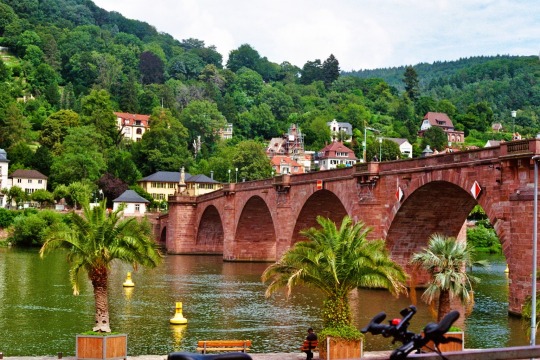









Some more shots from Heidelbergs old town and the castle. I‘ve shot these in summer (like in the beginning of august) and on Kodak Ultramax (ISO 400 color/negative) with my Canon A1.
PS: This was my first time using Kodak Ultramax, but there will soon come up some more shots on this filmstock.
#heidelberg#süddeutschland#sommer#august#summer#summer 2024#film photography#35mm photography#analogue photography#35mm film#35mm#vintage aesthetic#retro aesthetic#retrowave#canon photography#kodak ultramax 400#kodak film#canon a1#germany#german castillo#old castle#castle ruins#castle#bridge#35mm camera#35mm flim#filmisalive#trending#viral trends#viralpost
25 notes
·
View notes
Text

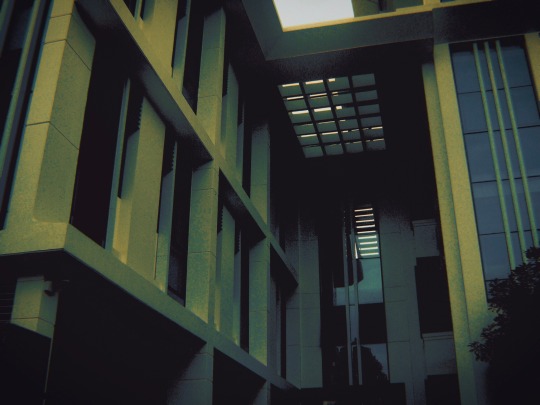
corp (se)
#by me#compact camera#digicam#fuji finepix f455#digital camera#brutalism#post soviet#soviet architecture#slavic#russian snow#russian winter#russian architecture#1960s#plattenbau#avant garde#cityscape#german photography#ruins#1970s#modernism#molchat doma#concrete#lightroom#urban decay#urban#strangecore#liminal space#original photography on tumblr#rural gothic#rural landscape
89 notes
·
View notes
Text
I am forever doomed as feedism enjoyer because I'm most likely to get into a) Fandom/character that is incredibly unpopular and therefore there's no feedism content about it or b) Fandom/character that is sooo popular and big. But no feedism content? For some reason???
#nai talks#and i have examples big sigh. L and L.ight d.eath note#never seen it. btw. but they got me in some weird chokehold#also example two not naming names but i'm not about to write feedism fanfic about some german musical about vampires#OH AND. stares at the camera intensely uhhh p.eter and s.teph s.tarkid iykyk
9 notes
·
View notes
Text

my bed in the mental hospital :3
#mental hospital#psych ward#i dunno which one is the correct word im german#kirby#mental health#cute#shitty camera#fujifilm finepix#nintendo#3ds
94 notes
·
View notes
Text

Black & White or Color?
Agfacolor Photo Film, 1964
#1960s#60s#60s advertising#vintage ads#german advertising#agfa film#agfacolor#1964#sixties#camera film#german magazines#60s fashion#60s hair#magazine ad#neue Illustrierte#new illustrated
7 notes
·
View notes
Text
Merten Merit Box Camera
We're three weeks into February, which I've deemed Box Camera Month for my blog posts. I purchased this camera about five years ago at a camera show I attended in Kent, WA, a suburb of Seattle. This show, which is a gathering of camera enthusiasts and collectors, is coming up again in early April. It's a great opportunity to see a wide variety of vintage cameras and photography equipment. If you're in the Seattle or Portland area, please stop in. I plan on having another few tables to sell off some of my collection.
Getting back to the camera of the week, I had previously owned the Merten Merit Box camera many years ago. Still, it wasn't nearly as good of condition as this one. It was missing one of the outer viewfinders, and there were many chips in the Bakelite, so I was pleased to see this example at the Kent camera show, and it was at a very reasonable price. One of the things that initially drew me to the camera was the color of the camera. It has a dark brown color with a smooth texture throughout the camera, with the exception of the faceplate, which has a pebble finish to the Bakelite.
The other nice thing about this camera is that Merten made two different models. The one I had previously was a 6x4.5cm format camera on 127 film. This camera is a rare version as it takes 120 films and produces a 6x9cm format image, so the negative is larger, and the film type is a lot easier to purchase. The other nice thing about this camera was the handle was intact. Due to how the camera is built, I have seen many examples where the strap is broken or missing. This camera has very few chips in the Bakelite, and the strap is intact and in overall great condition. The shutter also works.
Since all the stars are aligned with a 6x9cm format camera and a working shutter, the camera takes 120 film. I figured it was time for me to take the camera off the shelf, load film into the camera, dust off and clean the lens, and take a walk around the neighborhood to take photos with this wonderful photo-making machine.
The Company:
In 1906, the Merten brothers Ernst, August, and Emil founded the Gebrüder Merten Gummersbach (GMG) company in Windhagen-Gummersbach, Germany. They started manufacturing electronic installation components. In 1926, they focused their attention on manufacturing plugs and sockets, which is where their business grew.
In the early 1930s, Mertens used their Bakelite presses for various purposes, such as producing equipment for laboratories and, yes, in 1933, even producing a series of cameras for the rapidly growing photographic market. These were the only cameras produced by Mertens, and they turned their focus back to the electronic field.
By 1985, Mertens had grown to the point where they were producing electronic accessories items for the commercial trade, and by the year 2000, intelligent devices were added to their portfolio of electronic products. Merten's products for smart buildings are available in more than 130 countries, where they produce electronic products for residential buildings, offices, public buildings, hotels, schools, hospitals, and businesses. 100 years after they started their business, Schneider Electronics purchased Mertens in 2006.
My Camera:
My Merten Merit Box Camera is 4.5" tall, including the leather strap, 3.5" wide with the winding knob 5.5" deep from the front of the lens to the back of the camera. The camera weighs 1 lb, 1.6 oz without film loaded into the camera. The camera is a typical box camera with two different viewfinders, one for vertical images on top of the camera and one for horizontal images on the right side.
The Merit Box camera has a Rodenstock lens, around 80mm, and the aperture is F11. There are two positions for the shutter, which is set by a toggle arm below the lens, either a line for instant photos or a round circle setting for timed exposures. There is an option to screw in either a self-timer or cable release just above the shutter release button, which is located just to the right of the lens as you're preparing to take a photo. There is also a sliding bar on top of the camera, which allows for three different aperture settings. When the sliding bar is in the lowest position, the aperture is F11. Then, slide the bar up to the following setting, F16, and all the way to the top would be F22.
On the back of the camera is the name of the camera embossed into the Bakelite, the red window to tell the photographer which frame they are on, Germany, Film B-2, which is an Agfa reference to 120-size film, and finally, the film format 6:9.
One of the very unique features of the camera other than the beautiful dark brown color is the interwoven strap on top of the camera. The strap or top handle doesn't come off. Instead, it has two interlooped sections that allow the strap to lengthen as you take the front off the back of the camera to load film. This makes it more difficult to load the film as you need to deal with both the front of the camera and the rear when you load film into it. It's not difficult to deal with, but at the same time, it's more than most people are used to when loading a simple box camera, mainly used for the less professional photographer.
There are two locking mechanisms on each side of the camera to load the camera. Rotate the knobs counterclockwise to unlock the back from the front. Then, you'll need to slide the strap apart to allow the camera's front and back to be removed from each other. On my camera, the strap holds the two pieces together as the strap is somewhat tight and stiff. Once you slide the two strap pieces apart, the front and rear of the camera open easily; from there, you can load the film into the camera.
Once I put a roll of film into the camera, I attached the front to the back of the camera. I turned the locking knobs clockwise to lock the two together and slid the strap back to the shorter position so it would hold the front and the back together a bit better. It could quickly be done if I needed to make the handle a bit longer to hold the strap as I used the camera.
The one thing I noticed when I went to load the film into the camera was the winding mechanism didn't engage with the film spool very well. I needed to press the winding knob, and I was turning the knob to advance the film. The flat end of the winding mechanism that fits into the spool didn't seem long or thick enough to fit tightly into the film spool. The whole winding mechanism seemed very wobbly. I did try t tighten the screw, but that didn't help. The camera is almost 100 years old (92 years), and I'm guessing that it's just worn a bit, but I doubt it's been used very much because the strap is in great condition and still intact.
My Results:
Now that I had wrestled with the strap and held both the front and rear of the camera in my lap to load the camera with a roll of 120 films, it was time to take a walk through the neighborhood to see the results from this beautiful brown bakelite camera from the early 1930s. Here are some of the results from my walk.
Conclusion:
The one thing that I struggle with when using these simple box cameras is the close distance required to get a somewhat sharp image. Since it was somewhat sunny outside, I figured that using the sunny 16 rule would be my rule of thumb for exposures.
For those unfamiliar with the Sunny 16 rule, you use the shutter speed closest to the ASA, or as it's known now, ISO in your camera. (Yes, I'm old school.) If it's sunny outside, you use f16. I had ASA 125 film in the camera and figured the shutter speed was close to that, so I put the aperture setting in the middle setting for my exposures outside.
I photographed my daughter and her dog, Bean, initially about 4 to 5 feet away. Then I took a step back, and the photo still was out of focus, as were many of the images I took between 4-6 feet from the subject. The one image that is nice and sharp is the more scenic photo of one of the neighbors' houses, which turned out very well. My guess is the best minimum distance is 8-10 feet away, looking at some of the results I achieved.
Thank you for taking a few minutes from your day to look over this unique and simple camera from about a century ago. It was fun to take it off the shelf and use it as it was intended. The results are the best, and my guess is that due to several different reasons, the Merten Merit Box camera wasn't a huge seller during its time.
Until next week, please be safe.
#Merit box camera#Merit Box Camera#Mertens Co#Mertens Merit Box Camera#Camera#camera collecting#Camera from Germany#german camera#German camera#box camera#Box Camera#box style camera#120 film#120 camera#120 film camera#fun with film#fun camera#Fun Camera#Camera for fun#cameras for fun#film shooter#Film#film#film photography#film camera#film camera collector#film in old camera#Shooting film#classic camera#Classic Camera
0 notes
Text

#german shepherd#digicam#digital camera#original photographers#photographers on tumblr#photography#canon powershot
190 notes
·
View notes
Text
gotten to the point in criminal minds where they've fully given up the ghost. like sure. the unsub is uh *spins wheel* a sexual sadist who writes rhymes on the wall and targets *rolls dice* blond divorcees because when they were a child *throws dart* heard the beastie boys on the radio. hell yeah. brother i could write for this show.
#the minute they started calling unsubs ''bad guys'' like its so over#its so so so over#this happened back in like s4/5 btw#cm#the one where dave anders is german and lobotomizes his sister in the sewers. and puts CAMERAS IN HER EYE. like that made us YELL#we were loooooosing it#top 3 most ridiculous episodes
9 notes
·
View notes
Text
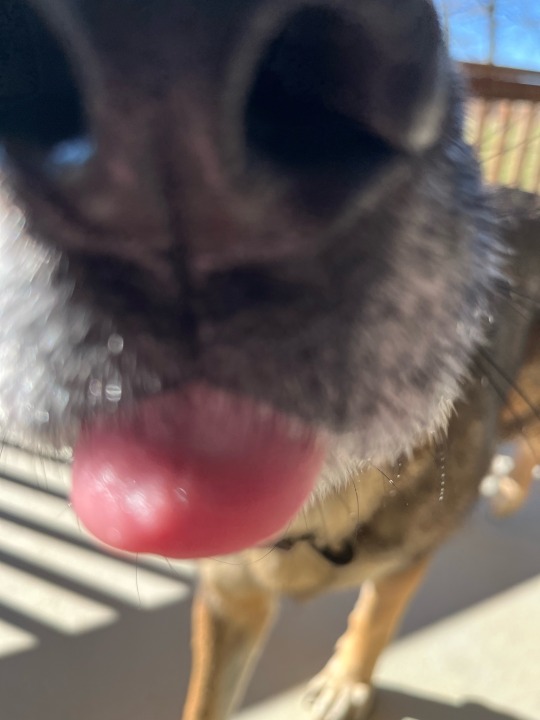
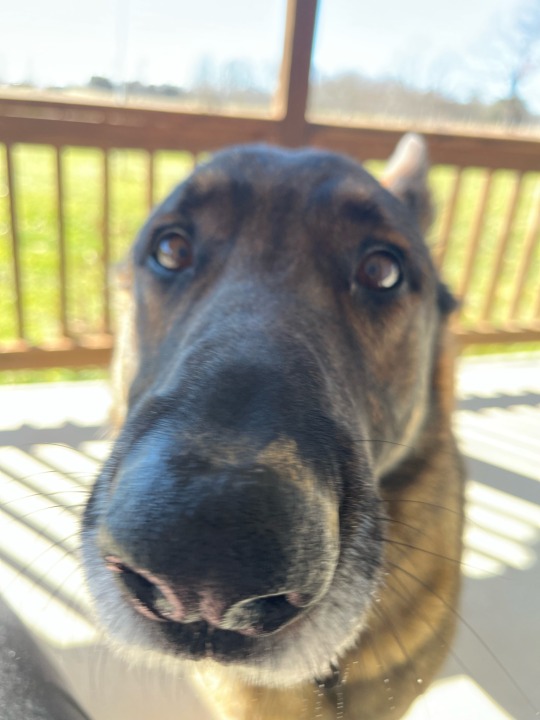
he luvs u btw… if u even care…
35 notes
·
View notes
Text
not a sunwoo edit of him saying shibal going viral on tt again, you guys come back when you actually care about the boyz and aren't being babies about someone swearing ....
#idk if it's bc i'm german and we swear very loosely and comfortably over here but seeing people go like he is so unhinged 😭😭😭 he's such a#bad boy omg in front of cameras sir pls behave 😔😳😵💫🫣 like grow up that's so embarrassing to read for me 😭😭#i say fuck at least 10 times a day if not more and i'm so tired of people acting like swearing is a federal offense in the kp0p space#ALSO if you only think he's hot move on rn bc tbz deserve better ... go look at jaehyun or smth ...#i also don't care if i sound like bitch rn bc i'm just so tired of one edit going viral for tbz every few weeks and then ppl go back to not#caring about them at all#000
11 notes
·
View notes
Text
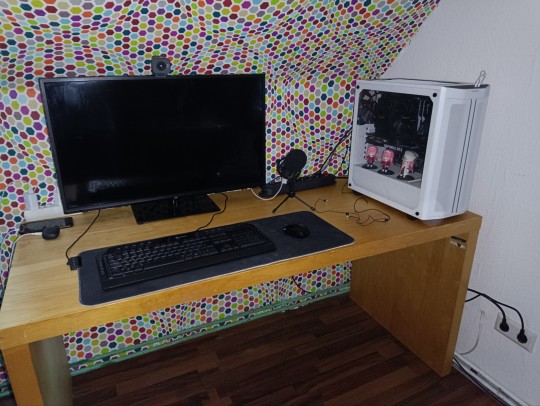
my G A M I N G home
perfect for most new games and retro stuff (emulation etc.) 🌸🌸🌸
#gaming#setup#pc#pc games#bethesda#starfield#black and white#video games#youtube#streaming#camera#msi#nvidia#geforce#zero two#fallout#anime#english#german#sharkoon#be quiet#gskill#pcbuild#trippy
52 notes
·
View notes